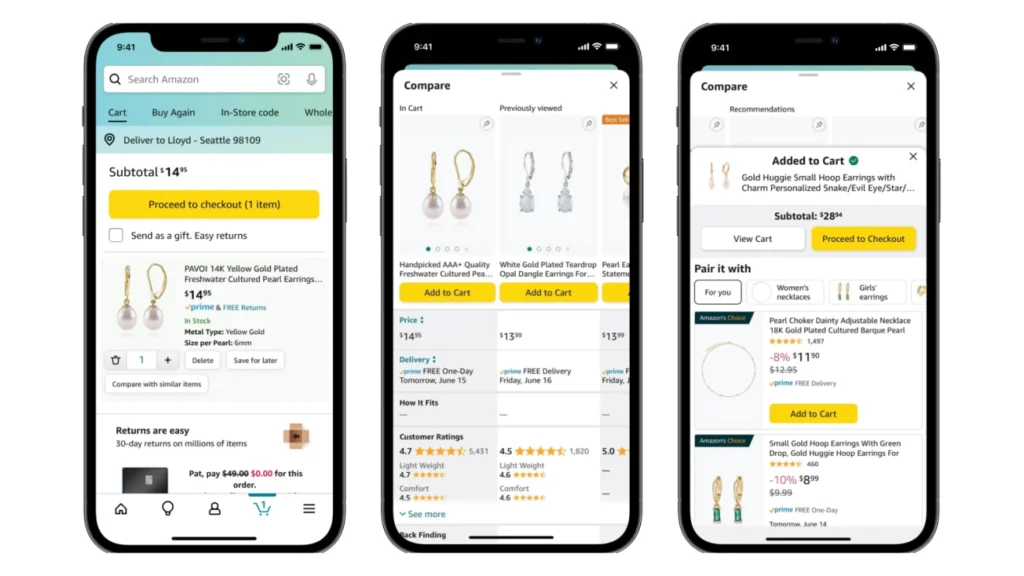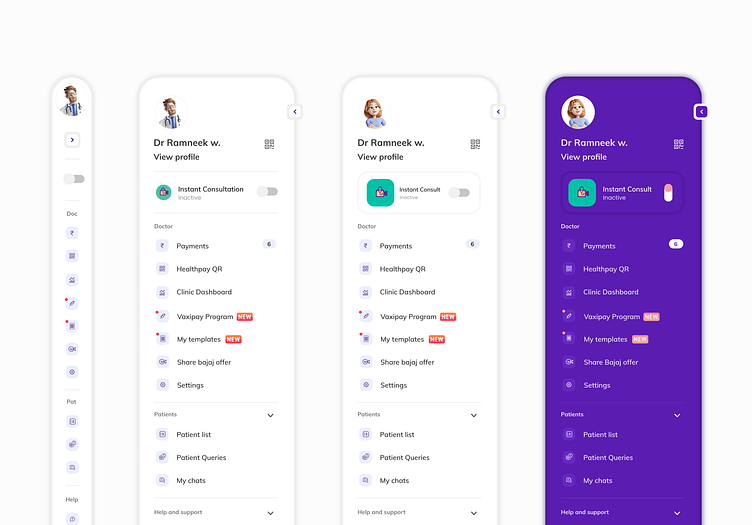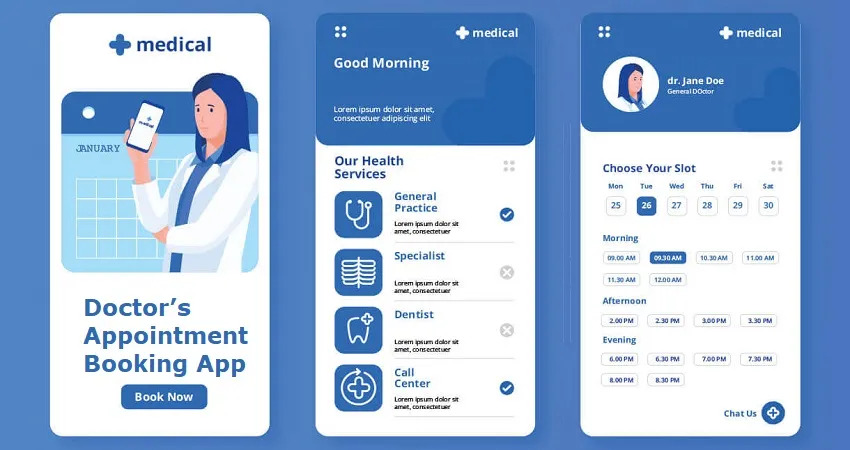
In the dynamic field of mobile app development, the debate on whether to invest in specialized, single-function apps versus multi-functional super apps is intensifying. While super apps try to consolidate various user needs into a one-stop mobile solution, they frequently fail to deliver due to their inherent complexity and the resultant overwhelming user experience. Conversely, specialized apps, particularly when developed as native mobile apps, offer a streamlined and focused functionality that not only boosts user satisfaction but also simplifies the app development and maintenance lifecycle. This paper delves into the distinct advantages of specialized native mobile apps over their multi-functional counterparts, underpinned by case studies and strategic insights. It argues that focusing on a singular, well-crafted function in native mobile app development is a more reliable strategy than the risky bet on the rare success stories of super apps.
Understanding Gall's Law
Gall’s Law, named after Robert Galambos, holds a critical place in the discourse around digital product development, emphasizing a foundational principle that underpins successful innovation. This law posits that all complex systems that work evolved from simpler systems that worked. In essence, it suggests a developmental trajectory where simplicity precedes complexity, a concept particularly resonant in the realm of app development and technology design.
The Essence of Gall's Law
Gall’s Law serves as a guiding principle for developers and product managers by advocating for a stepwise approach to complexity. It implies that attempting to design a complex system from scratch without a functioning simple system as its foundation is likely to fail. This principle is grounded in the understanding that simplicity allows for the essential testing of core functionalities, user engagement, and value proposition, setting a solid groundwork upon which complexity can be gradually introduced.
Historical Context and Relevance
The law finds its roots in the natural progression observed in technological evolution and biological systems alike, where complex entities emerge from simpler predecessors. Historically, many of the most successful digital products have adhered to this trajectory, beginning their journey as tools or platforms with a singular focus and, over time, expanding their functionalities based on user feedback, market demands, and technological advancements.
For example, many social media platforms started with simple, core features that catered to basic user needs—such as text posting or photo sharing—before evolving into complex ecosystems supporting a wide range of activities including live streaming, e-commerce, and more. These platforms managed to scale and evolve by ensuring that each added feature enhanced the user experience without detracting from the simplicity and intuitiveness of the core product.

Applications in Modern App Development
In the context of app development, Gall’s Law highlights the importance of starting with a minimal viable product (MVP) that addresses a specific need or problem effectively. This approach not only facilitates a focused development process but also enables developers to gather valuable user insights, which can guide the incremental addition of features. By adhering to this law, developers can avoid the pitfalls of overcomplication and ensure that their apps remain accessible, user-friendly, and relevant to their target audience.
Moreover, Gall’s Law underscores the significance of scalability and adaptability in the digital product lifecycle. A simple, successful app provides a flexible foundation that can be expanded and refined over time, allowing developers to respond dynamically to evolving user expectations and technological innovations.
Insights
Understanding and applying Gall’s Law in app development underscores the value of simplicity as the cornerstone of digital product success. It teaches that a well-conceived, simple app not only serves as a testbed for user acceptance and functionality but also as a springboard for future complexity and growth. This principle encourages developers to focus on creating straightforward, effective solutions that meet immediate user needs, thereby laying the groundwork for sustainable, scalable complexity. As we continue to navigate the fast-paced evolution of digital technologies, Gall’s Law remains a beacon, guiding the development of complex systems that are both functional and user-centric.
Advantages of Specialized, Single-Function Mobile Apps
Specialized, single-function apps focus on doing one thing exceptionally well, providing users with a streamlined, intuitive, and efficient experience. This focus not only aligns with the principles outlined by Gall’s Law but also offers a range of benefits that enhance user satisfaction, improve development outcomes, and strengthen market positioning. Below, we explore these advantages in detail.


User Experience
Clarity and Simplicity in Design
Single-function apps are characterized by their clean, intuitive interfaces that make navigation and usage straightforward for users. By concentrating on a core functionality, these apps eliminate unnecessary complexity, reducing the cognitive load on users and enhancing overall usability.
Reduced Cognitive Load and Learning Curve
Users often prefer apps that are easy to understand and use from the outset. Specialized apps offer a shallow learning curve, as they focus on a singular functionality without the added confusion of multiple features. This accessibility can lead to higher adoption rates and more consistent use.
Efficiency and Speed
With a dedicated focus, single-function apps can perform their core task more efficiently than their multi-functional counterparts. This specialization can result in faster load times, smoother performance, and a more responsive user interface, all of which contribute to a positive user experience.
Development and Maintenance
Streamlined Development Process
Focusing on a single functionality allows developers to concentrate their efforts on optimizing and refining that aspect of the app. This focus can lead to a more efficient development process, with fewer complexities and a clearer set of objectives.
Easier Maintenance and Updates
Specialized apps are typically simpler to maintain and update due to their focused nature. Developers can more easily identify and address issues, deploy updates, and refine the app’s core functionality without the need to navigate a web of interconnected features.
Agility in Responding to User Feedback
The simplicity of single-function apps makes it easier for developers to incorporate user feedback into iterative updates. This agility ensures that the app remains closely aligned with user needs and preferences, facilitating ongoing improvement and relevance.
Case Studies for Apps with Clear Focus - SnapChat
Snapchat offers another example of a specialized app that gained popularity due to its focus on temporary, person-to-person photo and video sharing. Its unique value proposition and straightforward functionality attracted millions of users, distinguishing it from more comprehensive social media platforms.

Market Positioning and Branding
Clear Value Proposition and Branding
Specialized apps have a distinct advantage in communicating their value proposition to potential users. By focusing on a single function, these apps can articulate their purpose and benefits more clearly, making it easier to differentiate themselves in a crowded marketplace.
Enhanced Discoverability in App Stores
Apps that serve a specific function can leverage targeted keywords and categories in app stores, improving their visibility and discoverability among users seeking specific solutions. This targeted approach can attract a more relevant and engaged user base.
Capturing Targeted Market Segments
Specialized apps are well-positioned to capture niche markets or serve specific user needs effectively. By delivering a focused solution, these apps can cultivate a loyal user base that appreciates the specialized functionality and expertise offered.
Case Study: Facebook and Its Suite of Specialized Apps
Facebook, Inc. (now Meta Platforms, Inc.) offers a compelling case study in the strategic division of services into specialized apps. Originally a single platform offering multiple functionalities, Facebook recognized the need to offer more focused, high-quality user experiences by spinning off certain features into standalone apps.
Facebook Messenger: Originally a feature within the main Facebook app, Messenger was spun off into its own app in 2011. This move allowed Facebook to optimize the messaging experience with faster performance and additional features like video calls and stickers, which would have been cumbersome within the main app. Messenger’s success is evident with over a billion downloads, highlighting the demand for specialized communication tools.
Instagram and WhatsApp: Acquisitions of Instagram in 2012 and WhatsApp in 2014 further exemplified Facebook’s strategy to dominate various social networking and communication functions through specialized apps. Each platform serves distinct user needs — Instagram for photo and video sharing, and WhatsApp for messaging and voice calls — with interfaces and functionalities optimized for those purposes.
These specialized apps have allowed Facebook to cater to diverse user preferences and use cases, driving higher engagement across its ecosystem.
Challenges and Considerations for Multi-Functional Apps
While multi-functional apps aim to offer a comprehensive suite of features under one roof, this approach comes with its own set of challenges and considerations. These complexities can impact user experience, development efficiency, and overall product success. Here, we delve into some of the critical challenges faced by multi-functional apps and the considerations developers must account for.
Complexity in Design and Navigation
User Confusion and Overwhelm
One of the primary challenges with multi-functional apps is the potential for user confusion. As the number of features increases, so does the complexity of the app’s navigation and interface. This can overwhelm users, especially those who prefer simplicity and may only need to use a fraction of the available functionalities.
Diluted Core Value Proposition
When an app tries to do too much, it can dilute its core value proposition, making it harder for users to understand the primary benefit of the app. This dilution can hinder user engagement and retention, as users might not easily find or understand the app’s key functionalities.
Increased Development and Maintenance Resources
Resource Intensiveness
Developing and maintaining a multi-functional app requires significant resources, including time, money, and skilled personnel. The complexity of integrating various features while ensuring they work seamlessly together can escalate development costs and timelines.
Quality Assurance Challenges
Ensuring the high quality and reliability of each feature in a multi-functional app is a daunting task. The interdependencies between features can introduce bugs and performance issues, making quality assurance a more complex and resource-intensive process.
Difficulties in Creating a Cohesive User Experience
Inconsistent User Interface (UI) and User Experience (UX)
Balancing a consistent UI/UX design across a wide range of features is challenging. Disparities in design and user interaction patterns can fragment the user experience, making the app feel disjointed.
Feature Bloat and Underutilization
Multi-functional apps risk falling into the trap of feature bloat, where numerous features are underused or irrelevant to the majority of users. This not only wastes development efforts but can also detract from the overall user experience by cluttering the app with unnecessary options.
Case Study: Municipal App Development Experience
A more localized example of the specialized vs. multi-functional app debate comes from the experience many municipalities have faced. Initially, many cities launched super apps designed to offer numerous municipal services within a single platform. However, these apps faced significant challenges:
Low Download and Engagement Rates: The app’s complexity and the broad scope of functionalities led to confusion and a lack of clear value proposition for users. As a result, few residents downloaded or engaged with the app.
Specialized Snow Removal App Success: Despite its highly specific use case — providing value primarily during snowstorms — this suite of apps achieved unprecedented success with Canadian municipalities, with more than 300,000 downloads. This was a clear indication that users prefer apps that serve a single, specific purpose and deliver clear, immediate value.
Then, many cities started buying specialized products that offered apps, and they saw how these apps, that did far less, were getting way more downloads and engagement (e.g. apps such as tennis court booking, pothole reporting).
Risk of None of the Functionalities Being Executed Exceptionally Well
Jack of All Trades, Master of None
There is a risk that a multi-functional app might not excel in any specific area, offering mediocre performance across its various features. Users seeking high-quality, specialized tools might turn to single-function apps that offer superior performance in specific tasks.
Strategic Considerations for Developing Multi-Functional Apps
Despite these challenges, multi-functional apps can be successful if developers strategically address these concerns:
Prioritize Core Features: Identify and focus on enhancing the core features that provide the most value to users, ensuring they are executed flawlessly before adding additional functionalities.
Iterative Development and User Feedback: Employ an iterative development process that incorporates user feedback to refine existing features and assess the need for new ones. This approach helps ensure that each functionality genuinely enhances the user experience.
Simplify User Interaction: Design the app’s interface to simplify navigation and make it easy for users to access the features they need. Employing user-centered design principles can help create a more intuitive and cohesive experience.
Performance Optimization: Regularly assess and optimize the app’s performance to ensure that the addition of new features does not degrade speed or reliability. Performance optimization should be an ongoing priority to maintain user satisfaction.
Case Study: Focused User Experience of Uber
Uber’s journey through the expansion of its mobile app offerings presents a strategic case study in managing complexity while prioritizing user experience. Initially, Uber integrated its ride-sharing service with a new feature, Uber Eats, within the same app, venturing beyond its core mission to enhance user convenience by introducing food delivery services. However, in alignment with the essence of specialized, single-function app development, Uber made a pivotal decision to split Uber Eats into a standalone app. This move underscores a deliberate strategy to maintain simplicity and focus within each app, ensuring that each service—whether for ride-sharing or food delivery—could offer a dedicated, optimized user experience.
The separation into two apps, each concentrating on a specific function, allowed Uber to refine and tailor the user interfaces and functionalities to the unique requirements and user journeys of ride-sharing and food delivery. This specialization has enabled Uber to offer more focused, intuitive experiences in both domains, enhancing usability and user satisfaction. By adopting this approach, Uber demonstrates the effective application of specialized app development principles, even as it expands its portfolio of services. The company’s success in navigating the expansion of its services, while maintaining a clear, dedicated user experience in each app, highlights the strength of specialization in the competitive mobile app landscape.
Strategic Implementation of Gall's Law in App Development
Implementing Gall’s Law in app development involves a strategic focus on simplicity and iterative growth. This principal advocates for starting with a minimal viable product (MVP) that performs a single function effectively, then gradually introducing complexity based on user feedback and success. This approach ensures a solid foundation for the app, emphasizing functionality, user experience, and scalability. Below, we discuss strategies for effectively applying Gall’s Law to app development.
Starting with a Single, Core Functionality
Identifying the MVP
The first step in adhering to Gall’s Law is to identify the core functionality that your app will offer. This involves thorough market research to understand user needs and pinpointing a specific problem that your app can solve efficiently. The MVP should focus on delivering this core functionality with high quality and minimal complexity.
Focus on Solving One Problem Well
The app should aim to solve a specific problem better than anyone else in the market. This singular focus not only makes the development process more manageable but also ensures that the app can quickly gain traction among its target audience by offering a clear, compelling value proposition.
Iterative Development
Adding Features Based on User Feedback and Success Metrics.
Engaging with Your User Base
Once the MVP is launched, it’s crucial to actively engage with your user base to gather feedback. This feedback will guide the prioritization of new features and improvements. User engagement can be facilitated through surveys, user testing sessions, and analysis of user behavior within the app.
Data-Driven Decision Making
Utilize success metrics and analytics to make informed decisions about which new features to develop. Metrics such as user retention rates, engagement levels, and feature usage can provide valuable insights into what users value most about your app.
Balancing Feature Addition with Maintaining Simplicity and Usability
Maintain a User-Centric Approach
As new features are added, continuously evaluate the impact on the user experience. Maintaining a user-centric approach ensures that the app remains intuitive and easy to use, even as it evolves.
Simplification and Optimization
Regularly review the app’s features and performance to identify opportunities for simplification and optimization. Removing underused or redundant features can help keep the app streamlined and focused.
Educating Users on New Features
Implement strategies to educate users about new features and functionalities as they are introduced. This can include in-app tutorials, update notes, and direct communication through email or social media. Educating users ensures that they can fully benefit from the app’s evolving capabilities.
Insights for a New Mobile App Project
For a new mobile app project starting from scratch, grounding your development strategy in Gall’s Law can guide your team toward creating a successful, user-centric product. Here are key insights and strategies for identifying core features and designing an optimal user experience around them:
Identifying Core Features
- Conduct Thorough Market Research: Begin with in-depth market research to understand your target users’ needs, pain points, and the current solutions available in the market. Analyze competitors and identify gaps that your app could fill. Tools like surveys, focus groups, and analysis of online forums and social media can provide valuable insights into what users truly need.
- Define Your Value Proposition: Based on your research, articulate a clear, compelling value proposition that defines the unique benefit your app offers to users. This should address a specific problem or need that isn’t currently being met effectively by existing solutions.
- Identify the MVP: From your value proposition, distill the app’s core functionality—the single most important feature that will solve your users’ primary problem. This MVP should be simple yet effective, offering a streamlined solution that aligns with your target users’ most critical needs.
Strategies for Core Feature Identification
- User Personas and Journey Mapping: Develop user personas representing your app’s ideal users. Map out their typical journeys to understand how they would interact with your app and what features are essential to fulfilling their needs.
- Prioritize Features Based on User Impact: Use techniques like the MoSCoW method (Must have, Should have, Could have, Won’t have) to prioritize features. Focus on the “Must haves” for your MVP, ensuring that these features directly support your app’s core functionality.
- Prototype and Validate: Create a prototype of your app focusing on the MVP and test it with a small group of target users. Gather feedback on usability, the appeal of the core feature, and any additional features users feel are missing. This feedback is crucial for refining your MVP before full-scale development begins.
Designing a User Experience Focused on Core Features
- Simplicity Is Key: Design your app’s user interface with simplicity in mind. The core feature should be easily accessible, with a clean design that minimizes distractions and unnecessary complexity.
- Iterative Design Process: Employ an iterative design process, using user feedback to continually refine the app’s UX. This approach ensures that the app remains focused on user needs and that any additional features integrated over time do not detract from the core user experience.
- Usability Testing: Conduct ongoing usability testing, even after the app’s launch, to ensure that the user experience remains intuitive and efficient as the app evolves. This should include testing across different devices and platforms to ensure a consistent experience for all users.
- Educate and Inform Users: As new features are added, use in-app tutorials, update notes, and direct communication to educate users about these enhancements. Ensuring users understand how to use new features is critical for maintaining an engaging and valuable user experience.
Insights for an Existing Mobile App
For an existing mobile app requiring auditing and UX refinement, leveraging Gall’s Law as a guiding framework can significantly enhance user satisfaction and engagement. Here’s how teams can systematically approach this task to identify areas for improvement and strategically refine the app’s core features and overall user experience:
Auditing the Current State
- Conduct a Comprehensive UX Audit: Begin with a thorough evaluation of the current user experience. This should include usability testing with real users, heuristic evaluations by UX experts, and an analysis of user feedback and app reviews. Identify friction points, areas of user confusion, and features that are underutilized or causing dissatisfaction.
- Analyze Usage Data: Dive into the app’s analytics to understand how users interact with the app. Pay close attention to drop-off points, feature engagement levels, and paths taken through the app. This data can reveal what users value most and where they encounter obstacles.
- Reevaluate the App’s Core Functionality: Assess whether the app’s original core feature still effectively meets user needs. Market needs and user expectations can evolve, and what was once a core value proposition may need adjustment or refinement.
Strategies for Refinement
- Prioritize Based on Impact: Use the insights gathered from the audit to prioritize changes based on their potential impact on user experience. Focus on quick wins that can immediately enhance usability and satisfaction, as well as longer-term improvements for deeper structural changes.
- Streamline and Simplify: Look for opportunities to simplify the app. This may involve removing redundant features, streamlining complex processes, or making the core functionality more accessible. Simplification can lead to a more focused and user-friendly experience.
- Iterative Improvement: Adopt an iterative approach to implementing changes. Make one change at a time and measure its impact through user feedback and analytics. This allows for data-driven decision-making and ensures that each change contributes positively to the user experience.
Enhancing User Experience Around Core Features
- Focus on User-Centric Design: Ensure that every aspect of the app, especially the core functionalities, is designed with the user in mind. This means easy navigation, intuitive interfaces, and clear calls to action that guide users seamlessly through their tasks.
- Usability Testing: Continue to conduct usability testing as improvements are made. Testing should include a diverse range of users to ensure the app meets the needs of its entire audience. Use feedback to make further adjustments, constantly refining the user experience.
- Educate Users on Improvements: As changes are implemented, communicate these updates to users through in-app messages, update notes, and other channels. Highlighting improvements can re-engage users and encourage them to explore new or refined features.
- Monitor and Adapt: Keep a close eye on user feedback and app performance metrics following each update. Be prepared to make further adjustments based on user responses and changing market dynamics. The goal is to maintain a cycle of continuous improvement that keeps the app relevant and user-friendly.
Conclusion
The journey of app development, from concept to a user’s device, is fraught with challenges, not least of which is the significant cost and effort required to persuade even a single user to download an app. In an era where the digital marketplace is saturated with options, standing out and proving immediate, tangible value to potential users is paramount. This task is made all the more demanding given the critical importance of offering a smooth, easy-to-use experience that fulfills a specific need without unnecessary complexity.
Adding functions to an app may seem like a way to add value, but it often complicates the creation of a beautiful, seamless user experience. Each additional feature introduces potential points of failure, opportunities for confusion, and barriers to user satisfaction. This complexity can lead to lower conversion rates, higher churn, and increased user frustration. Given the Herculean effort required to achieve a single app download, it is vital that developers make the most of this opportunity by focusing on core functionalities that meet users’ needs directly and efficiently.
In essence, the strategic implementation of Gall’s Law in app development is not just a recommendation; it is a necessity for those aiming to succeed in a crowded marketplace. By concentrating on delivering a singular, well-executed function, apps can significantly enhance user engagement and retention, turning the formidable challenge of attracting downloads into a sustainable, rewarding relationship with users.
Frequently Asked Questions (FAQ)
Answer: Specialized mobile apps tend to offer a better user experience because they have a clear focus, which allows for a more intuitive and straightforward design. By concentrating on a single core functionality, these apps can minimize cognitive load, making it easier for users to understand and engage with the app. This simplicity in design and purpose also leads to better performance and speed, as the app isn’t bogged down by unnecessary features.
Applying Gall’s Law in mobile app development encourages starting with a minimal viable product (MVP) that performs a single function effectively. This approach ensures a solid foundation based on simplicity, allowing for incremental complexity based on user feedback. It helps in avoiding the pitfalls of overcomplication, ensuring that the app remains user-friendly, scalable, and adaptable to changing user needs and technological advancements.
Identifying the core functionality of a mobile app involves thorough market research to understand target users’ needs, creating user personas and journey maps, and prioritizing features based on user impact. Prototyping and validating the MVP with real users to gather feedback is also crucial. This process helps pinpoint the specific problem the app aims to solve and ensures that the development focus remains on delivering this core functionality effectively.
Developers can maintain simplicity in app design by adopting an iterative development approach, where new features are introduced gradually and based on clear user demand. Regularly reviewing the app’s features for relevance and usability, simplifying or removing underused features, and ensuring that any new addition enhances rather than complicates the user experience are essential practices. Educating users on how to use new features through in-app tutorials and updates can also help maintain a seamless user experience.
Usability testing is crucial in mobile app development because it provides direct insights into how real users interact with the app, including any issues or obstacles they encounter. This feedback is invaluable for refining the app’s design and functionality, ensuring it meets user expectations and is easy to navigate. Regular usability testing, especially after introducing new features, helps maintain a high-quality user experience and supports continuous improvement.
Developers can effectively gather user feedback through various methods, such as in-app surveys, user testing sessions, feedback forms within the app, and monitoring reviews in app stores. Engaging with users on social media platforms and forums where discussions about the app might occur can also provide insights. Implementing analytics tools to track user behavior and feature usage within the app offers additional, quantifiable feedback that can guide development decisions.
App stores’ discovery algorithms tend to favor specialized mobile apps because they often have more focused and relevant keywords, clearer titles, and descriptions, and a more targeted audience, which can lead to higher engagement rates and better reviews. This focused approach makes it easier for potential users to find the app when searching for solutions to specific problems, increasing visibility and downloads.

